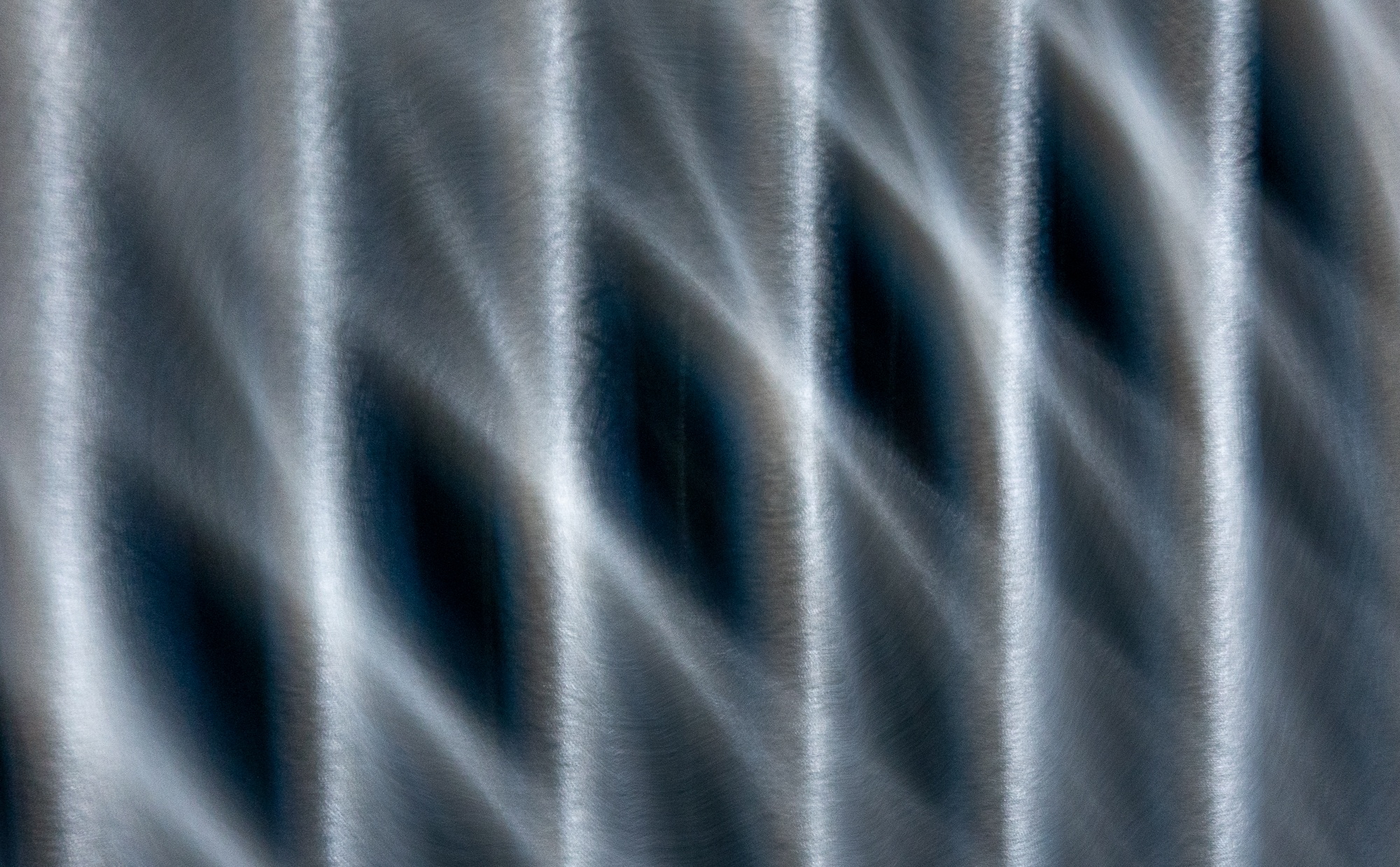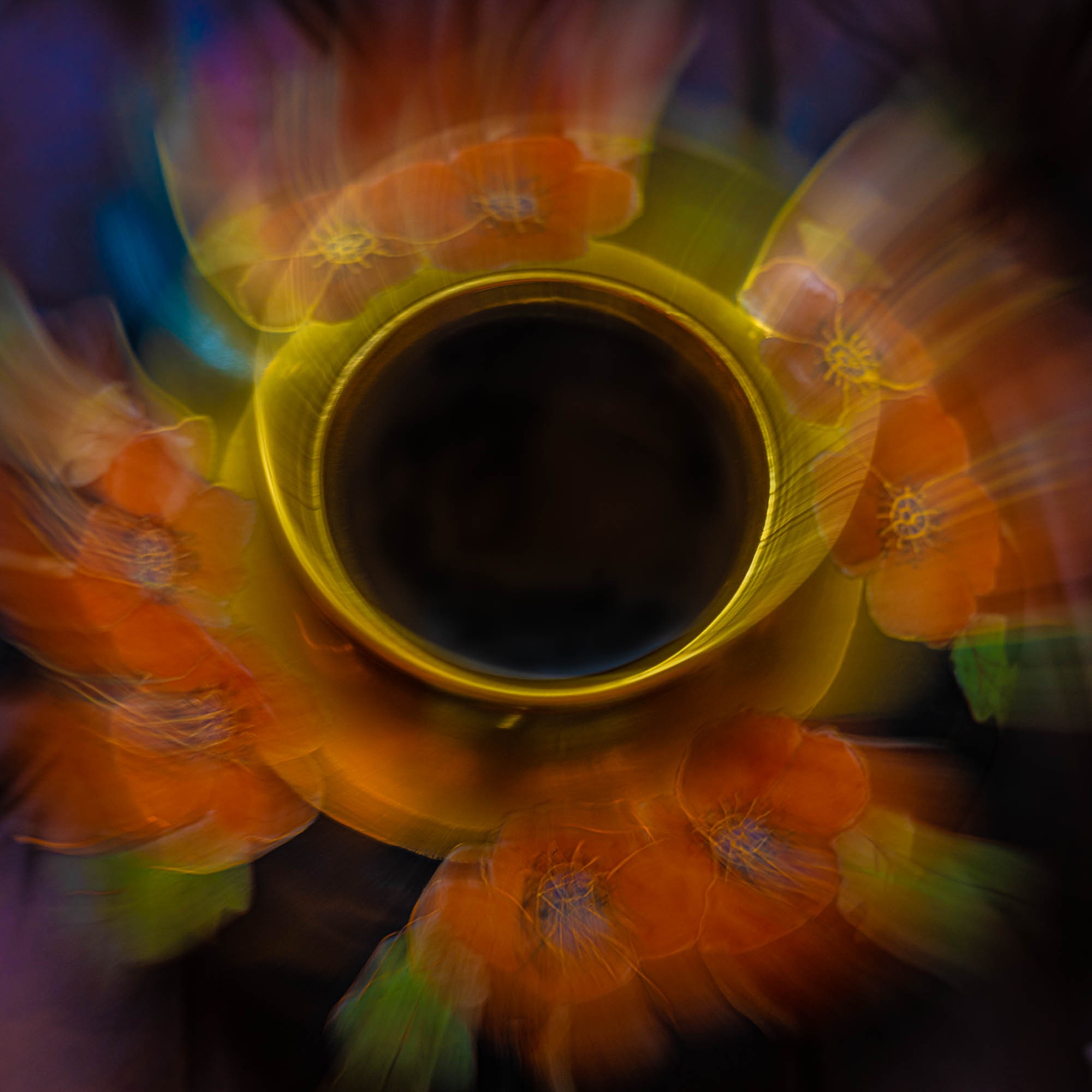Use In-Camera motion to create a sense of motion in your images.
What is In-Camera Motion?
In-camera motion, also known as intentional camera movement (ICM), is creating images that show motion by moving your camera. Instead of the subject moving, you will move your camera different ways to create a sense of movement in your image.
Why use In-Camera Motion as a photographic technique
Using ICM can help you create a different style of image than you normally create. It will get you to stretch your imagination and help you be more creative. Another benefit of using ICM is that it allows you to create abstract images you may not otherwise see when you’re out shooting. Different techniques allow you to bring out your inner artist.
How to create images using In-Camera Motion
First you’ll want to use shutter priority mode so you can control your shutter speed. Then you want to use Brent’s inverse rule by making sure your shutter speed is half your focal length. This is the opposite of the regular rule for shooting.
Find an interesting subject that is high contrast black and white or contrasting colors. Focus on that and then move your camera while the shutter is open. Make sure you have set your shutter speed slow enough to capture the motion. If it’s bright out you may want to use an ND filter to reduce the amount of light you’re letting in.
Sounds pretty simple right?
There are several ways you can create ICM images.
1) Focus and zoom. Once you are focused on your subject, press the shutter and zoom the lens at the same time you press the shutter.
2) Focus and twist. Get your subject in the center and then rotate or twist your camera around.
3) Vertical or horizontal panning. Find your subject and pan your camera up or down for vertical movement and side to side for horizontal movement.
Photo BootCamp Magazine
In this issue of BootCamp magazine, find out how our BootCamp members use In-Camera Motion to create awesome images that show motion by moving their cameras.
And be sure to check out how you can join BootCamp at the end of the magazine!
(Larger file for desktop or iPad).
Alternatively if you have a slower connection you can view this magazine Here on ISSUU.
Below is a small sample of what’s in this magazine…
Join The Fastest, ‘Funnest’ Way To Improve Your Photography!
Photo BootCamp Academy is an online community where busy photographers gather to take their photography to new levels of enjoyment and progress.
- Discover exciting new skills
- Rekindle your passion for taking photos
- Improve fast with helpful feedback
- Experience enjoyment and progress
Inside BootCamp Magazine
Featured Artist
Let’s take a look at this month’s magazine. Here is our featured artist of the month, Romy Villanueva, from the Philippines.
For his featured image, at the time it was raining outside so he had to improvise for this shot. This is a photo of the pleated window curtain with only the ceiling light on. In the last second of exposure the camera was moved closer while turning clockwise creating geometric shapes.
Comment: Christine Rocher – “Wow….this is soooo cool Romy……the vertical white lines, with the repetitive diamond pattern plus the ghosting circular feel makes me want to look and look some more! Great work.”
Cover Image
This month’s magazine cover image is from Richard Hutson from the USA. The ’Spinning Vase’ was the culmination of many attempts to use zooming ICM to create an interesting image. The vase was placed on a dark surface, lit with filtered sunlight streaming in through a window. He held the camera directly above the vase with the lens wide open, used a slow shutter and zoomed slowly out from the center of the vase. He blackened the center and used a square crop to eliminate distractions.
Comment: Gina Skinner – “Really colorful capture, Richard. I like the speed of the spin, if that makes sense. The zoom does not feel frenzied, which makes this image, (visually), easier to appreciate! Well done :)”
Active Members
Let’s take a look at the other members have created using In-Camera Motion.
Let’s start with Laima Ratajczak from Australia. She was away last month in China and unable to watch the video for the latest challenge. ICM is again something new to her so not really knowing what she was meant to do, she decided to have a play. This was taken at a show in Shanghai where the acrobat was catching cups on his head while balancing on a rolling board. She was pleased with the colours and movement in this image…..one of MANY.
Comment: Valerie Worthen – “Beautiful colors with a nice feeling of movement. Your composition is spot on and I really like that you have also captured what appears to be a reflection. Well done.”
Next we have Sara O’Brien from the USA. She wanted to play with the settings on her phone camera one morning. She was successful, but not quite with her POI in the center. That being said, she really like how this turned out. Sara thought it worked best as landscape. She altered the white balance slightly to more accurately show the colors.
Comment: Leila Gonzalez Sullivan – “I love the deep reds in this image and am fascinated that you used your IPhone to capture it. I tried some shots but didn’t think of rotating the whole phone. I would hang this on my wall. Wonderful job!”
Next we have Peter Brody from the USA. This photo is called “Ghosts in a Revolutionary War Cemetery”. He rotated the camera clockwise for the spinning motion.
Comment: Laima Ratajczak – “I keep coming back to this photo it has really captured me. At first I thought that there were people in the foreground but I soon realised otherwise. Ghosts is such an appropriate description for this image. Awesome shot Peter well done!”
Then we have Rodney Charlton from Australia. For his entry for this month’s challenge, he has gone back to flowers and specifically white daisies for this photo of “growing daisies”. Rodney held the camera still for just a moment before using a rising vertical motion for the remainder of the exposure. This captured some details of the flower before the growth spurt.
Comment: Bruce Patterson – “Rodney, I really like that the flower heads are still discernible yet the motion is obvious. I will give this a go next time I am doing flowers.”
And last but not the least, this is from Sig Rannem from Canada. When he woke up one morning and saw the light streaming through their window shutters he thought: hmm, there is an idea. Here is the result. The image has been tweaked and cropped in Lightroom. Shot on a tripod with the last several seconds steady at 240 mm.
Comment: Erez Shilat – “Brilliant work Sig. It is amazing how you transferred a trivial scene into a mystery.”
Summary
- Using In-Camera Motion is a great way to get more creative and bring out your inner artist.
- There are several different ways to create in-camera motion. Zooming, rotating and panning are just three of those ways.
- Be sure to use a slow enough shutter speed to capture the motion.
Related Articles
Did you enjoy this article? Check out these related articles, too:
- The Ultimate Guide to Shutter Speed in Photography
Shutter speed and photography: Everything you’ve ever wanted to know. - Photography, Meet Simplicity
Practice minimalism to develop your artistic eye. - Leading Viewers On A Journey Through An Image!
A creative way to use leading lines to make your images more exciting and meaningful.
Do This Now
Please leave me a comment below – I’d love to know what you think. Brent










